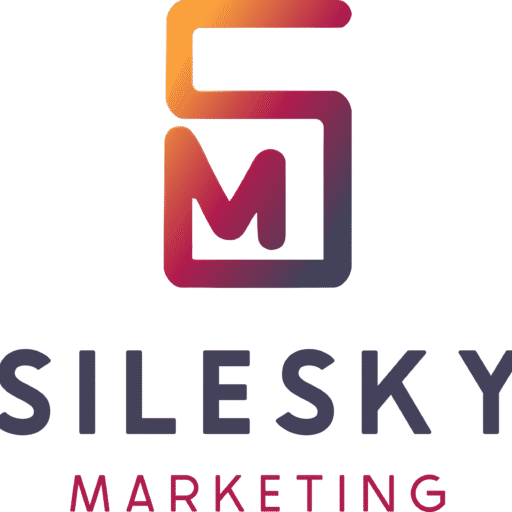Building a scalable business requires strategic planning around revenue, cost structure, and customer acquisition for long-term success. Businesses looking to expand must focus on growth strategies that don’t overwhelm resources or disrupt customer satisfaction. As companies grow, they encounter new challenges requiring careful consideration of operational efficiency and marketing outreach. Scaling a business involves more than just increasing size — it’s about fostering manageable, sustainable growth.
Importance of Scalability
Scalability is about more than just expansion; it’s about growing efficiently. A scalable business model handles increased demand without requiring an equivalent increase in costs. Businesses that scale well maintain their quality, improve operations, and stay competitive without overwhelming resources. Moreover, they can expand without experiencing unnecessary strain on their processes.
Why is scalability essential for growth?
- It allows businesses to meet higher demand without overextending resources.
- It ensures profitability by keeping operational costs manageable as the company grows.
- It supports long-term stability by creating a strong foundation for future expansion.
Incorporating scalability into the business from the start prepares it for inevitable growth. Those who focus on scalability often navigate this growth with fewer challenges, allowing their operations to remain efficient and effective.
Building a Scalable Business Model
A scalable business model doesn’t just adapt to present conditions; it anticipates future needs. Growth must be intentional and designed for flexibility. In this way, businesses can maintain smooth operations, even as demand increases.
Key factors in a scalable business model:
- Flexibility: Adapt quickly to changes and opportunities.
- Simplicity: Streamline processes to reduce complexity as the business grows.
- Repeatability: Ensure that core processes can be easily duplicated across teams and departments.
- Automation: Use tools that automate repetitive tasks and reduce manual labor.
A scalable business model minimizes growing pains by ensuring processes are efficient and repeatable. Businesses that build their models with these principles can scale more easily, ensuring they are prepared for future growth.
Expanding Revenue Streams
Diversifying revenue streams is a crucial aspect of scalability. Relying on a single source of income increases the risk of market fluctuations affecting growth. Therefore, businesses should actively seek to expand their revenue opportunities to create a stable financial base.
Methods to expand revenue streams:
- New product or service offerings: Introduce products or services that complement your existing lineup.
- Subscription services: Recurring revenue from subscription models can provide consistent cash flow.
- Franchising or licensing: Expand without managing every new location by franchising your brand.
- Exploring digital products: Transitioning to digital offerings can allow rapid scaling without high overhead.
By diversifying their revenue, businesses ensure that they can grow steadily. Multiple income sources not only reduce risk but also provide greater financial stability as the business scales.
Optimizing Cost Structure
Scaling efficiently doesn’t just mean earning more; it also requires managing costs. As your business grows, costs can spiral if left unchecked. A lean cost structure ensures profitability even during periods of rapid expansion.
Steps to optimize your cost structure:
- Outsource non-essential tasks: Use third-party services for administrative or technical tasks, allowing you to focus on core business functions.
- Leverage technology: Use cloud-based tools to reduce hardware costs and allow easy scaling as your needs grow.
- Negotiate bulk purchasing: As you scale, use your purchasing power to secure lower prices on materials and services.
- Streamline operations: Continuously assess your processes to reduce inefficiencies and save on operational expenses.
By keeping costs under control, businesses ensure that growth does not come at the expense of profitability. Regularly reviewing and optimizing the cost structure supports sustained growth.
Customer Acquisition Strategies
Acquiring new customers is the engine that drives growth. However, not all acquisition strategies work at scale. As businesses grow, customer acquisition must become more efficient, targeting the right customers with minimal resources.
Scalable customer acquisition strategies:
- Referral programs: Incentivize current customers to refer new clients, reducing acquisition costs.
- Targeted advertising: Focus marketing efforts on high-potential customer segments, maximizing return on investment.
- SEO and content marketing: Use organic methods like content marketing and SEO to drive sustained traffic without ongoing ad spend.
- Strategic partnerships: Collaborate with other brands to introduce your products to new audiences.
A strong customer acquisition strategy focuses on bringing in new customers at a reasonable cost. By refining their approach to customer acquisition, businesses can continue growing without significantly increasing their marketing budget.
Strategic Marketing for Growth
Marketing plays a pivotal role in scaling a business. However, marketing efforts must also grow efficiently. Marketing strategies should not only attract new customers but also retain existing ones.
Key components of scalable marketing:
- Brand awareness: Use digital marketing and social media platforms to spread the word about your business.
- Data-driven decision-making: Analyze customer behavior to create personalized campaigns that lead to higher conversions.
- Automation tools: Use marketing automation software to keep communication consistent without increasing the manual workload.
- Customer loyalty programs: Encourage repeat business with loyalty programs or exclusive deals for existing customers.
Strategic marketing allows businesses to maintain momentum as they grow. Scalable marketing doesn’t require excessive resources but rather focuses on maximizing efficiency through data and automation.
Leveraging Technology and Automation
Technology plays a crucial role in business scalability. Using the right tools can help businesses grow without adding extra overhead or complexity. Automating tasks and adopting scalable technologies streamline operations and allow companies to focus on growth.
How technology and automation drive scalability:
- CRM systems: Manage customer relationships more efficiently with automated customer communication and data tracking.
- Automation software: Automate repetitive tasks like invoicing, marketing emails, and customer service inquiries.
- Data analytics: Use analytics tools to track performance, make data-driven decisions, and identify areas for improvement.
- E-commerce platforms: Scalable e-commerce systems allow businesses to handle higher volumes of transactions with ease.
Integrating technology into daily operations supports growth by improving efficiency and reducing the need for manual input. Companies that embrace these tools will have an easier time scaling while maintaining quality.
Building a Strong Team
A business is only as scalable as its team. As your company grows, your team must grow in capacity and expertise to meet increased demand. Building a team ready to scale with the business involves intentional hiring, training, and management practices.
Key strategies for building a scalable team:
- Hire for growth: Look for employees who can take on more responsibility as the business expands.
- Invest in development: Provide opportunities for professional development so employees can grow alongside the business.
- Promote leadership from within: Encourage internal leadership development to create a team that can help guide the business through growth.
- Foster collaboration: Build a culture of teamwork to ensure that everyone is aligned and working toward the company’s goals.
By focusing on growth-oriented hiring and internal development, businesses can build a team capable of supporting scalable expansion. Employees who feel supported and valued will contribute more as the company grows.
Maintaining Quality While Scaling
As businesses scale, maintaining quality becomes more challenging but no less important. Scaling should not come at the expense of product or service standards. In fact, quality control is critical to sustaining long-term success.
How to maintain quality during growth:
- Standardize processes: Develop clear, consistent procedures that ensure high standards across all operations.
- Use customer feedback: Regularly assess customer feedback to identify areas where quality might slip.
- Set quality benchmarks: Implement clear metrics for measuring performance and quality.
- Monitor regularly: Use data analytics to monitor quality and address potential issues before they affect customers.
Maintaining quality while scaling allows businesses to build trust with their customers and ensure that growth leads to lasting success, rather than short-term gains.
Conclusion
Building a scalable business involves more than just pursuing growth. It requires careful planning, strategic decisions, and an unwavering commitment to quality. By focusing on scalable revenue streams, cost optimization, strategic marketing, and leveraging technology, businesses can create a model that supports sustainable long-term success. Whether you are just starting out or are looking to expand your operations, these strategies will help ensure that your business can grow profitably while maintaining the standards and practices that set it apart from the competition.





